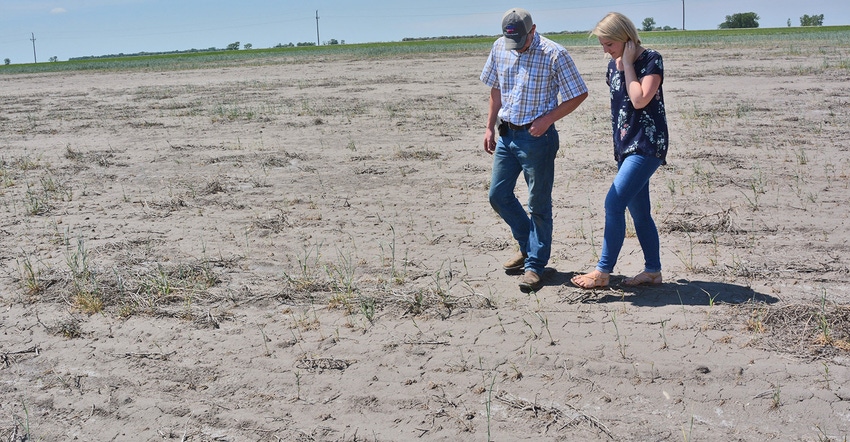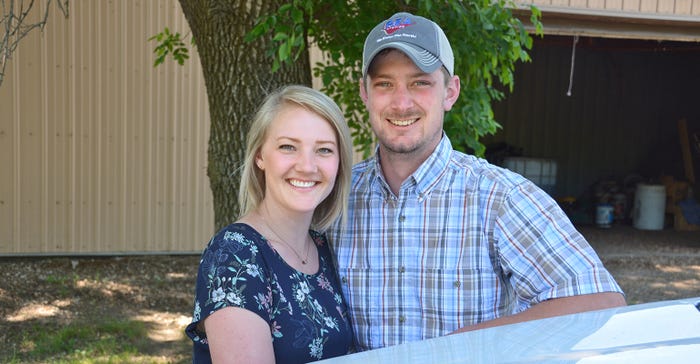June 26, 2018

When Sam Partlow saw the expansion of saline soils across some of the 4,500 acres that he farms with his partners, Jim and John Holth, he knew they had to something about it.
"The saline problems started during a wet cycle we had several years ago," Partlow says. "First we had one or two acres of saline soil, then we had 10 and that turned into 20."
In some areas, only salt-tolerant crops such as barley would grow. In "really terrible" areas, salt tolerant grasses were all that survived. In the worst areas, only kochia weeds would grow.
"Some of this soil, which lies right along Highway 281, has been that way for 15 years," Partlow says. "We believe the road acts like a berm to slow the movement of water."
After working with Paul Dubourt, Foster County district conservationist, to learn more about using cover crops to improve soil quality, Partlow decided to plant cover crops after wheat or barley.
"My objective was to reduce the amount of time those harvested fields were bare," Partlow says. "Often it's late July until a freeze that those fields are empty. I expected the cover crops would help suppress weeds, too, reducing the amount of tillage and chemical treatment needed for that."
With the first round of cover crops, Partlow successfully kept a live root in the soil from grain harvest to freeze up. His neighbor brought livestock in to graze some of the covers. and he realized his goal of reducing the weed pressure he'd seen with bare fields.
 BEGINNING FARMERS: Sam and Brianne Partlow are working to keep salinity from claiming more of their cropland.
BEGINNING FARMERS: Sam and Brianne Partlow are working to keep salinity from claiming more of their cropland.

What Partlow didn't expect to see in the fields planted with cover crops was retreating saline areas.
"Cover crops wouldn't grow in some of those saline areas, but the outside borders of the saline areas have been shrinking every year since we started using cover crops," Partlow says. "In 2017 we were able to plant at least 30% of the acres that were once saline. Part of that reclamation may be due to a drier weather cycle the last couple of years. But the cover crops keep advancing further and further into those saline areas."
Partlow likes the trend he is seeing.
"We'll keep working with cover crops and see what other benefits they might provide," he says.
Tillage, wetland link
If you think you have too many wetlands, the problem might not be too much rain, says Don Dubourt, Foster County NRCS district conservationist.
It could be too little water infiltration.
If the soil doesn't absorb a lot of precipitation quickly, what remains on the surface will run off in low areas, he says.
Dubourt says tillage may be part of the reason for a low-infiltration rate.
"Many times, when I visit with someone who has wetland issues, I ask about their current management and they explain that they chisel plow in the fall," Dubourt says. "They'll chisel again in spring and then make a third pass with vertical tillage coulters. Compaction occurs with every tillage pass. There's almost no better way to compact soil than to dig it up when it's wet. The compaction layer becomes rock hard. Water would infiltrate a Walmart parking lot faster than wet soil that's been tilled."
If soils are dry enough to till, Dubourt says to ask yourself, "Why am I wasting my time with tillage rather than seeding?"
Sorensen writes from Yankton, S.D.
About the Author(s)
You May Also Like




